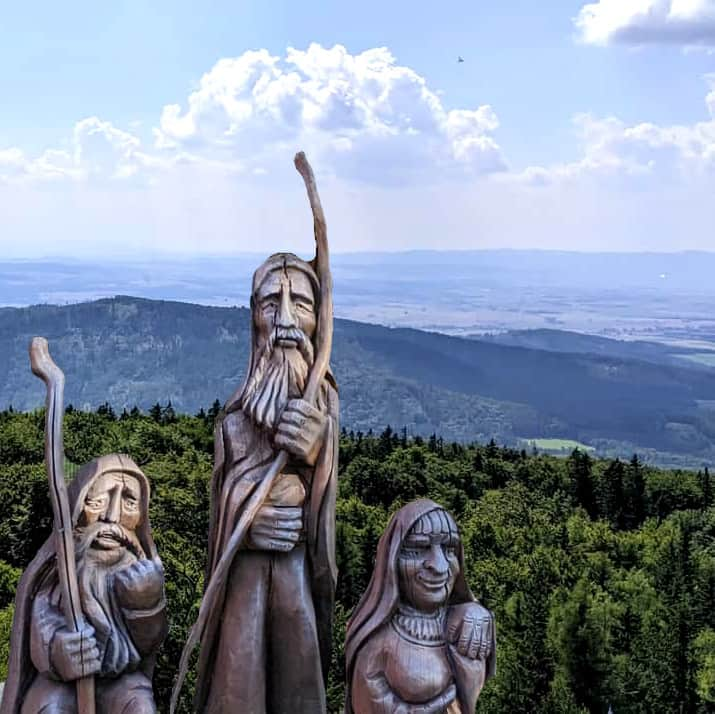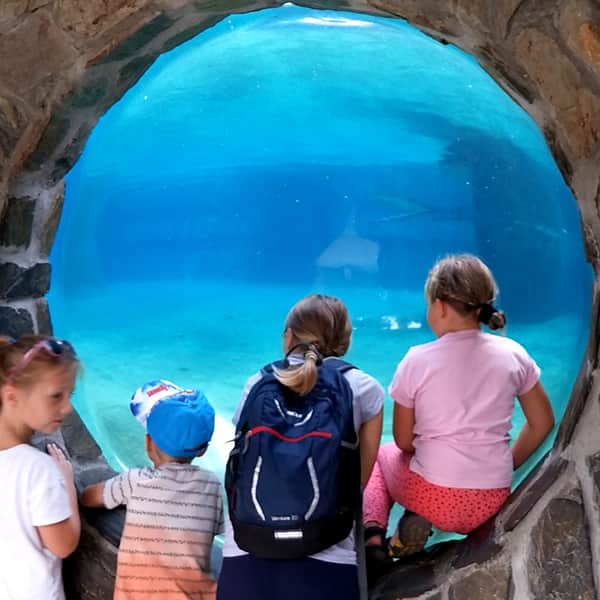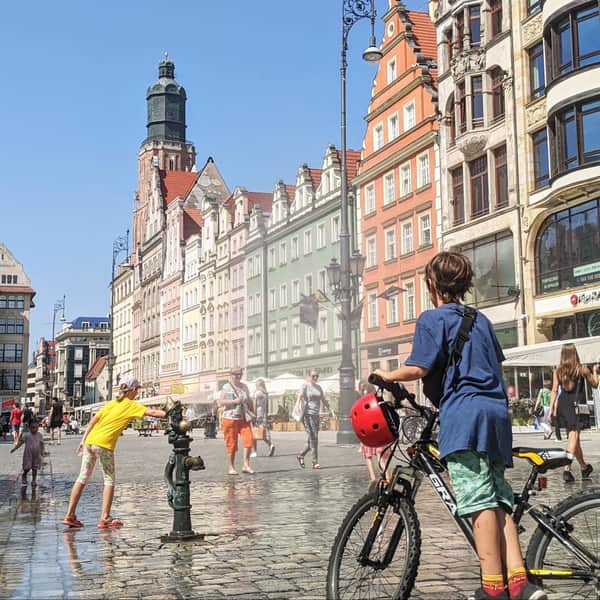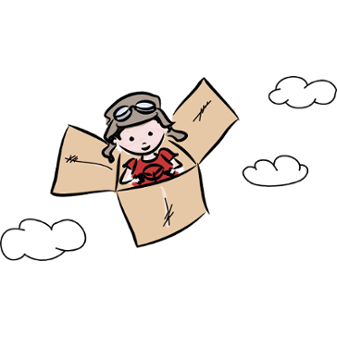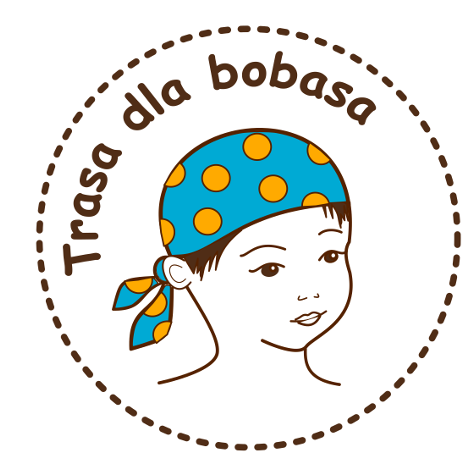Wrocław - Exploring Landmarks and History with Children
restaurant Restaurant or bar nearby
sports_tennis Attractions for children
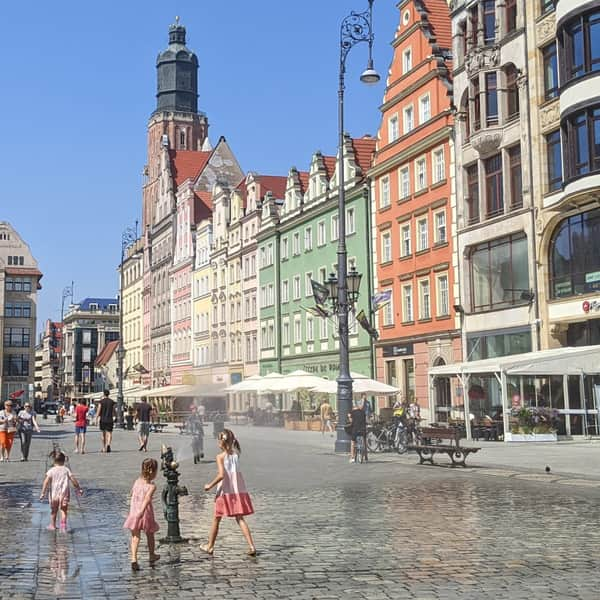
- Wrocław - What to See in One Day?
- Where Did the Name Wrocław Come From?
- Market Square in Wrocław
- Solny Square
- Helmet Tower
- Hansel and Gretel Houses
- Butcher's Stalls
- Witch Bridge (Penitential Bridge)
- Ossolineum
- University of Wrocław and Mathematical Tower
- Rivers and Bridges
- Ostrów Tumski
- Visual Map with Marked Places
- Coloring Pages of Wrocław for Children to Print
Wrocław - What to See in One Day?
Our trip starts at Wrocław Market Square, where we will take a walk around the Old Town, learning about its history and important landmarks. This walking tour is suitable for older children. If you're looking for something lighter, check out this article: Wrocław - Fun Facts, Legends, and Attractions for Children around the Market Square
Useful information:
- On the route, you will find three observation towers: the Helmet Tower (the tallest in the center of Wrocław, but also with the most tiring ascent), the Witch Bridge (the most interesting for children), and the Mathematical Tower with a viewing terrace - you can find details about visiting them in the article below.
- After dusk, it's worth visiting Ostrów Tumski - you may encounter a lamplighter who lights the gas lanterns.
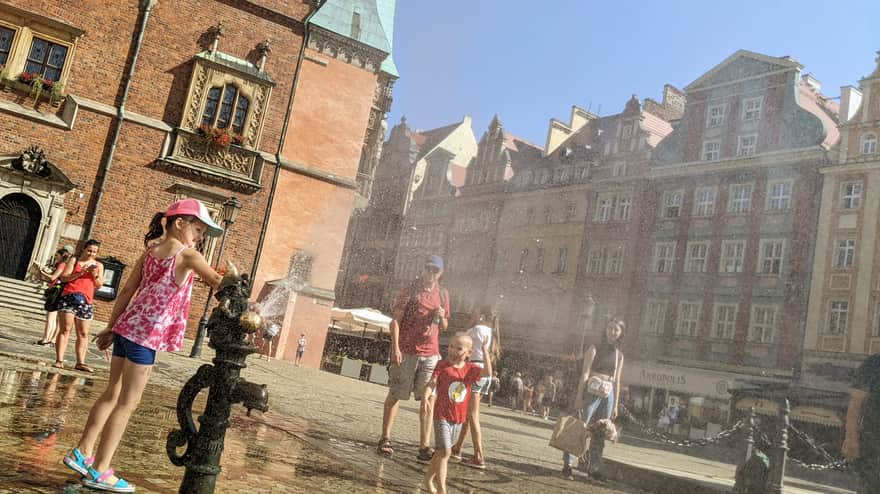
Where Did the Name Wrocław Come From?
Long ago, at the intersection of important routes running from south to north of Europe (towards the Baltic Sea) and from west to east (to the Black Sea region), a settlement was established in a convenient location by the Oder River. This is how the history of Wrocław begins.
The name "Wrocław" probably comes from the Old Polish name of the founder of the stronghold - Czech Duke Wrocisław, meaning "the one who will return famous". Originally, the name took the form of Wrocławj, which meant Wrocław's stronghold, but the prefix j did not survive into written Polish.
Market Square in Wrocław
Wrocław was an important place on the trade map of Europe. The city received the right of staple from the king, which required merchants passing through Wrocław to put their goods up for sale. The city quickly became wealthy.
Wrocław Market Square is impressive! It is surrounded by 60 historic tenement houses. Did you know that each side of the Wrocław Market Square has its own name?
- The eastern side is called "Greenery Lane" - it derives from a well that was located opposite the entrance to the town hall. Its copper pipes were covered with a green patina.
- The southern side is called "Golden Cup" - there were inns and a brewery here.
- The western side is known as the "Seven Electors" - it is where the residents paid homage to visiting monarchs.
- The northern side is called "Temptation Market" and reminds us of the delicacies that the Wrocław burghers traded here centuries ago.
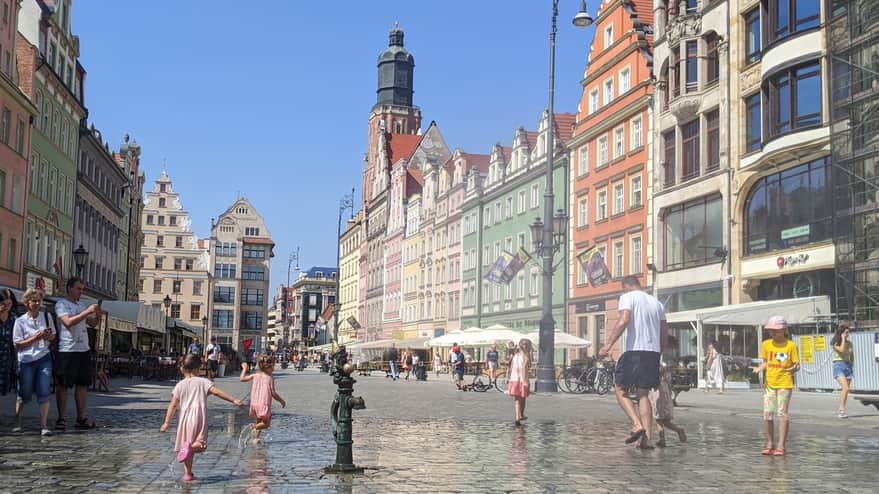
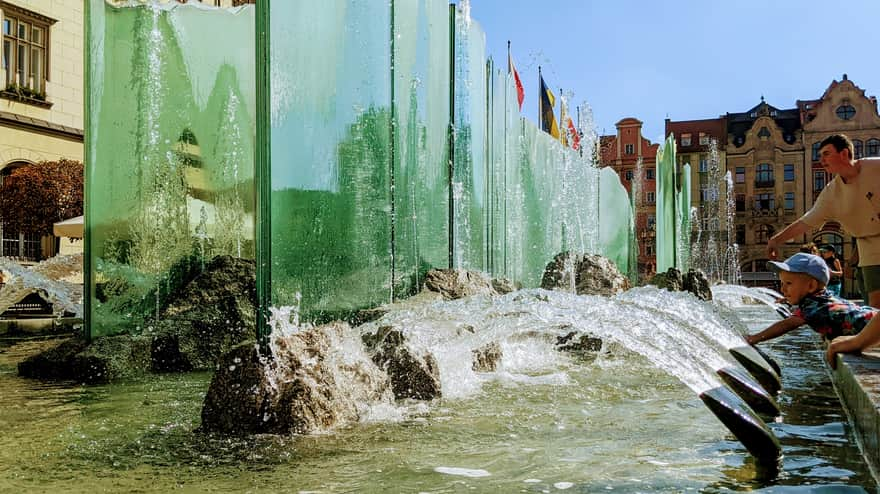
Town Hall in Wrocław
From the terrace of the town hall tower, a trumpeter plays the Wrocław Trumpet Call. The tower houses the oldest clock bell in Poland from 1368.
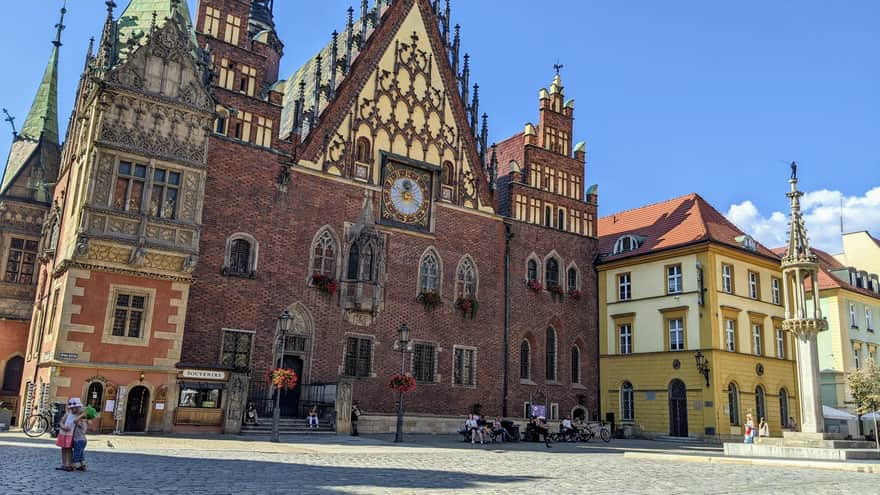
Coat of Arms of Wrocław
On the pavement of Wrocław Market Square (in front of the entrance to the Town Hall), you will find the coat of arms of Wrocław. The city's patron is St. John the Baptist. We can see him on the city's seals, and inside the city's coat of arms... his head is depicted. The story is somewhat macabre. When St. John the Baptist urged people to repent and baptized them in the Jordan River, King Herod did not like it. He ordered his head to be cut off. St. John the Baptist's head was brought to the king on a silver tray and that is how it is depicted in the coat of arms of Wrocław.
Around St. John the Baptist's head, there are four fields related to the city's history: the white lion with a crown is a symbol of Czech power, the Piast eagle is associated with the rule of the Silesian Piasts in Wrocław. The letter "W" on the third field represents the city's founder, Wrocisław, and on the fourth field, there is the evangelist John, who watches over the city council.
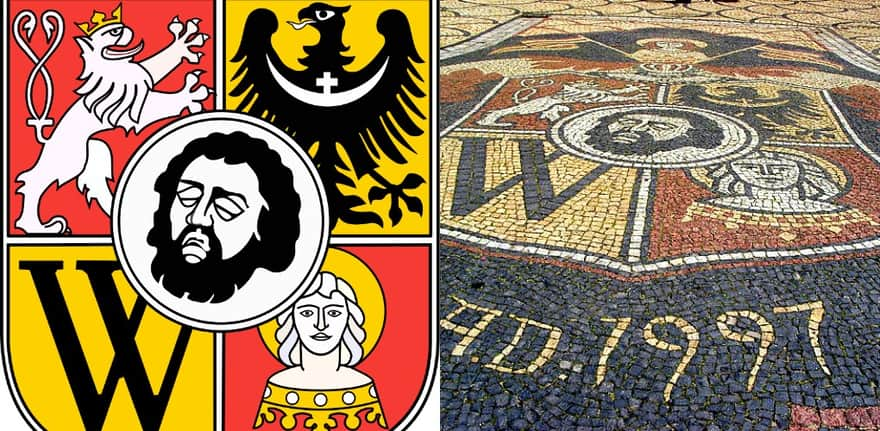
Solny Square
Right next to the Market Square is Solny Square. In the past, in busy trading cities, the main square was often crowded, so an auxiliary market square would be established nearby. Solny Square served as such an auxiliary market square. Products from Poland were traded here, including salt from the famous mines in Wieliczka and Bochnia, as well as leather, furs, wax, and honey. The richest burghers lived on Solny Square and its surroundings.
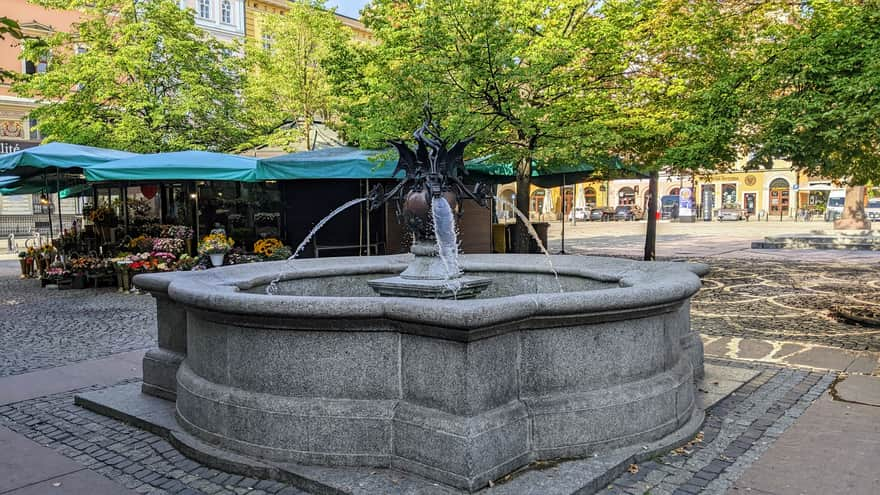
Helmet Tower
And what is that red brick tower with a copper helmet and lantern towering over Wrocław's Old Town? It is the tower of St. Elizabeth's Church, which measures 91 meters and has over 300 stairs! Originally, the tower was even taller and was one of the tallest in this part of Europe. Unfortunately, the tower's helmet collapsed during a storm. A bas-relief depicting the scene of the tower's collapse was embedded in the tower wall - angels delicately lift the tower's helmet and bring it down to the ground.
You can climb the tower - it offers the highest viewpoint of the Wrocław Old Town!
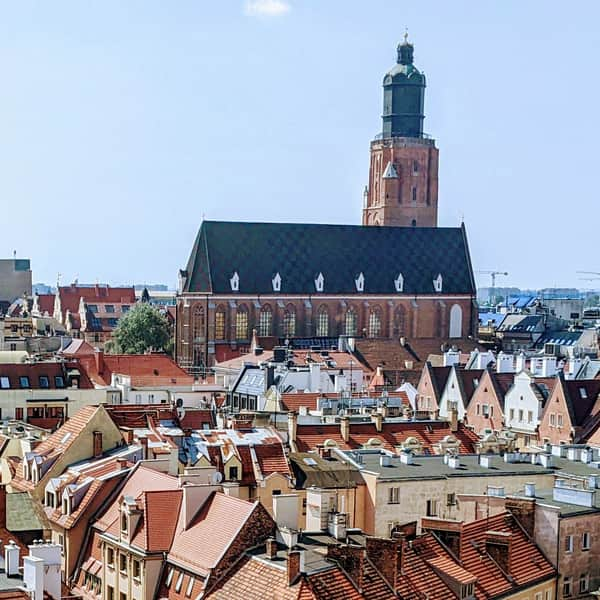
Garrison Church of St. Elizabeth - the highest viewpoint in the center of Wrocław
The tower of the Garrison Church of St. Elizabeth is the highest viewpoint in the heart of Wrocław, right next to the market square. It stands at 91 meters tall and requires climbing over 300 stairs to reach the top! The ascent can be tiring, but the views make it worthwhile! ...
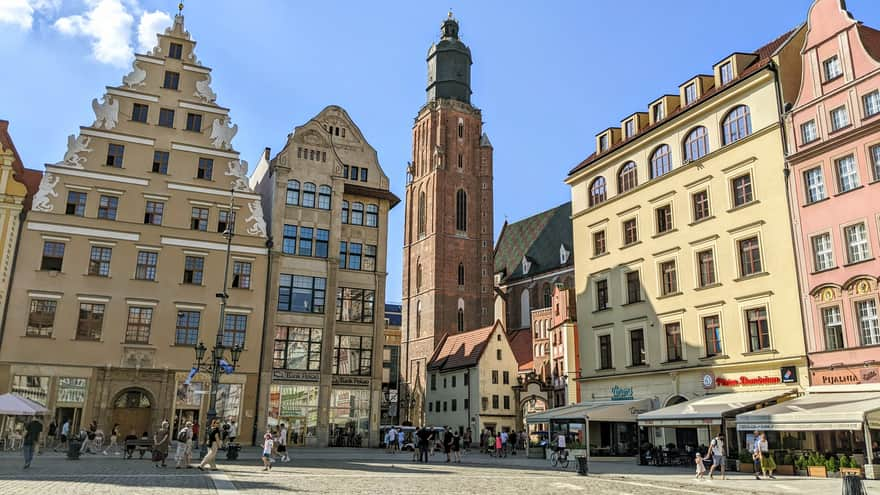
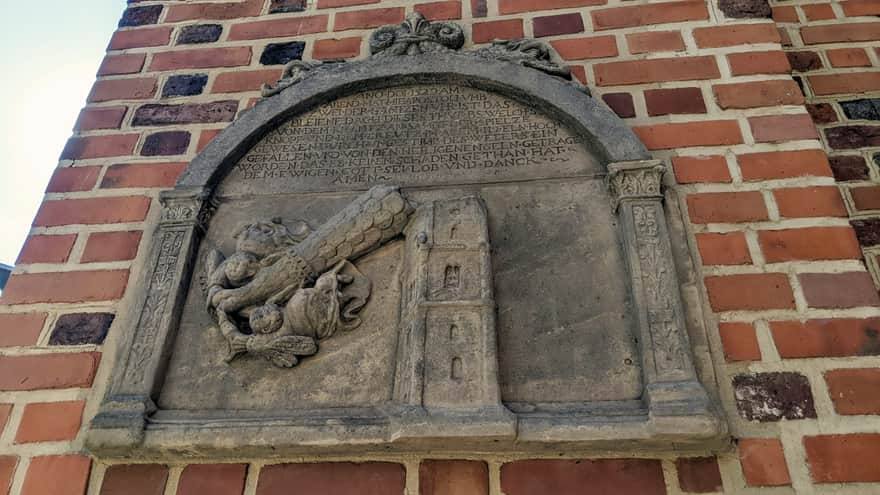
Hansel and Gretel Houses
Near the church, you will find two tiny houses. The people of Wrocław named them Hansel and Gretel because, like the siblings from the fairy tale, the two buildings are connected by an arch of an old gate. If you look very closely, you will notice a tiny plaque on one of the houses, indicating the Dwarf Museum - it is a museum just for dwarves!
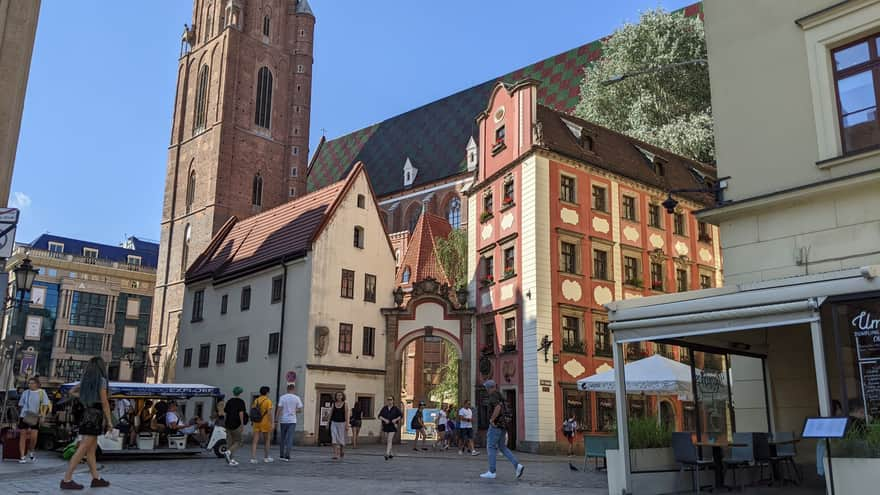
Butcher's Stalls
Imagine a bustling and lively market street in a medieval city. This is where the residents of Wrocław used to buy meat. You could also buy fat, which was used to illuminate rooms in the past. Now, there is a monument here in honor of the Butchered Animals - it includes a cow, piglet, goat, goose, duck, rabbit, and rooster. You can also meet the Butcher Dwarf here.
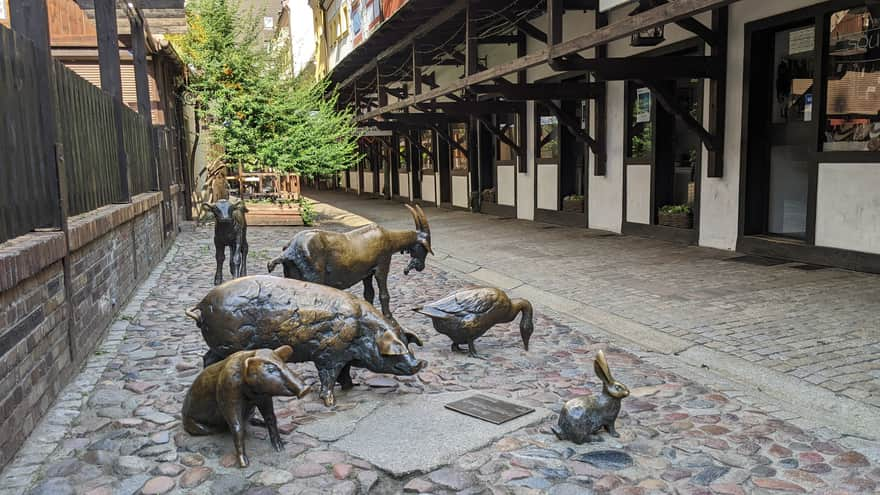
Witch Bridge (Penitential Bridge)
Witch Bridge, also known as Penitential Bridge, connects two towers of St. Magdalene's Church in Wrocław's Old Town. It is located at a height of 47 meters and offers a view of Wrocław Market Square and more. Children will surely enjoy the legend and the friendly figures of two witches: Martynka and Tekla.
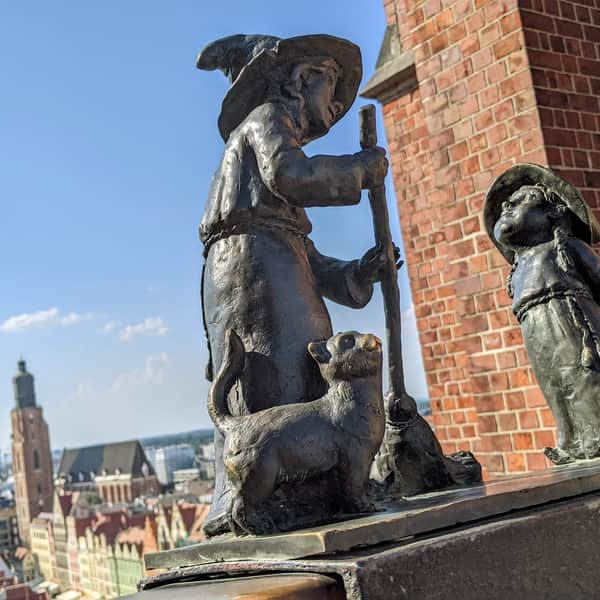
Penance Bridge (Witch's Bridge) - the most interesting viewpoint in Wrocław
The Penance Bridge, also known as the Witch's Bridge, is a connection between two towers of the St. Magdalene Church. It offers a view of the Old Town. ...
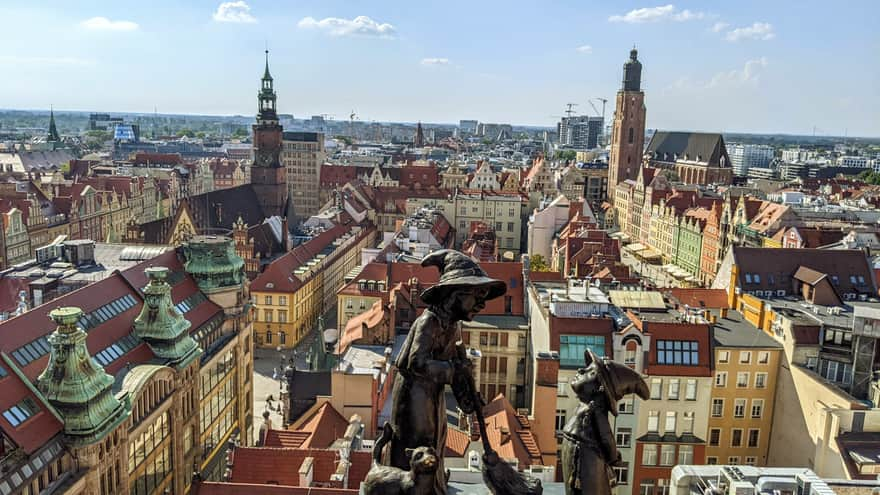
Ossolineum
We leave Wrocław Market Square and head towards the islands on the Oder River. On the way, we pass by Ossolineum - one of the oldest centers of Polish culture, founded in Lviv and relocated to Wrocław. Here, you can find manuscripts dating back 700 years! This includes documents issued by Polish kings, works by Polish writers such as Adam Mickiewicz's "Pan Tadeusz," and one of the first editions of Nicolaus Copernicus' "On the Revolutions of the Heavenly Spheres." Unfortunately, there is no museum here, but you can visit the courtyard behind the entrance doors.
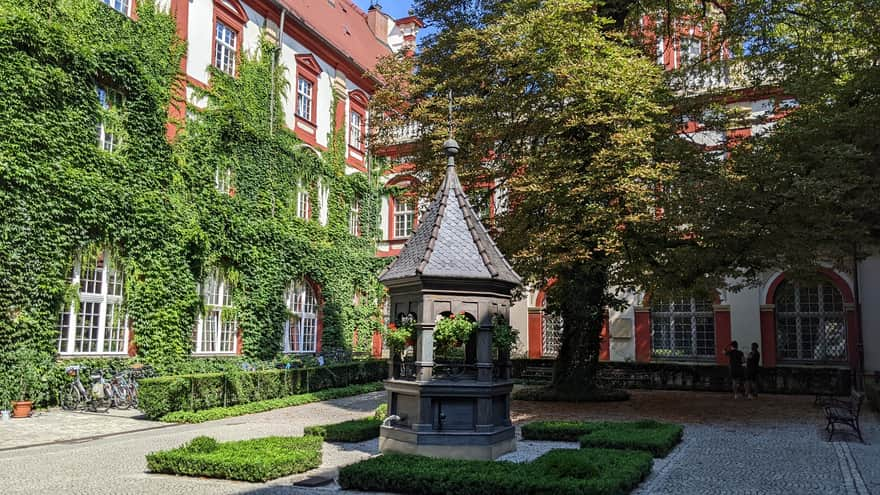
University of Wrocław and Mathematical Tower
Right next to the Ossolineum building, you will find the University of Wrocław - did you know that it stands on the site of the former Piast Castle? Next to the building, you will find a dwarf - the rector. We enter through heavy, historic, and richly decorated doors - perhaps the most beautiful in all of Wrocław! When visiting the University, it is worth seeing the Leopoldine Hall - one of the most beautiful and representative halls in the main building, where the most important academic ceremonies take place.
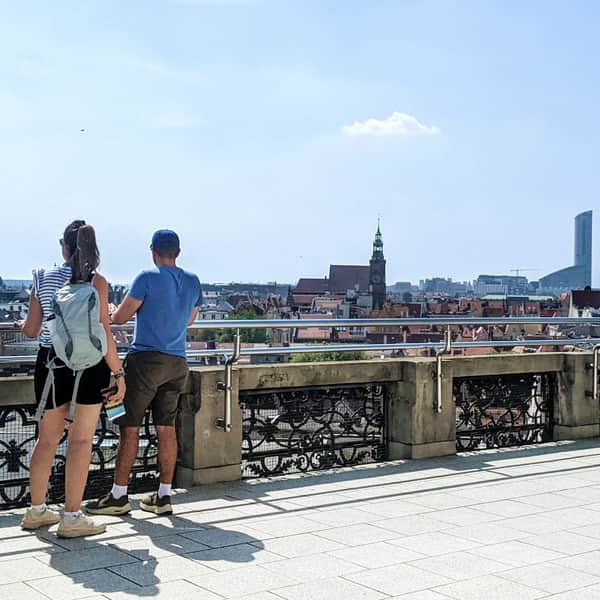
Mathematical Tower and Viewpoint - University of Wrocław
The Mathematical Tower is a tower of the University of Wrocław building. It is located in the center of Wrocław in the Old Town, and the terrace on it provides a fantastic viewpoint! ...
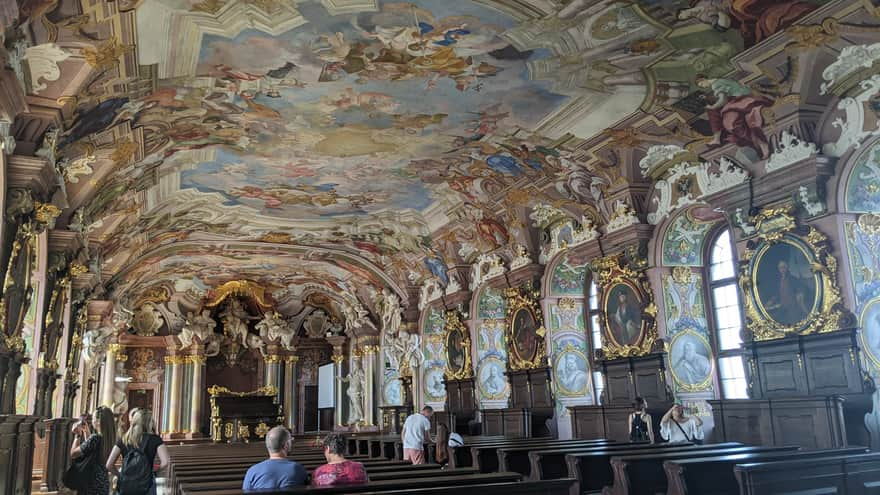
Rivers and Bridges
We reach the Oder River. People established their settlements near rivers to have access to drinking water and fish for food. However, rivers also posed a significant obstacle to trade routes, so the first bridges were built, such as the Sand Bridge, which was on the route of the Amber Road. Toll was collected for crossing the bridges - a tollgate.
Today, there are over 120 bridges in Wrocław! No wonder, as it is located at the confluence of five rivers: the Oder, Oława, Ślęza, Widawa, and Bystrzyca. That's why Wrocław is often called the "Venice of Poland."
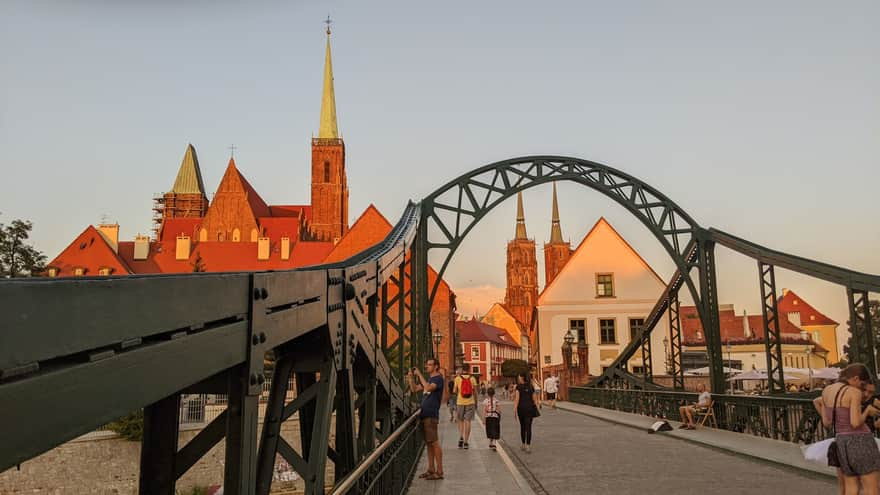

Ostrów Tumski
It used to be an island that has been the seat of Wrocław bishops for over 1000 years. The beginnings of Wrocław are associated with Ostrów Tumski - the first stronghold was built here, and the prince had his residence here. It is worth visiting the island at dusk - then you can meet a lamplighter who lights the gas street lamps.
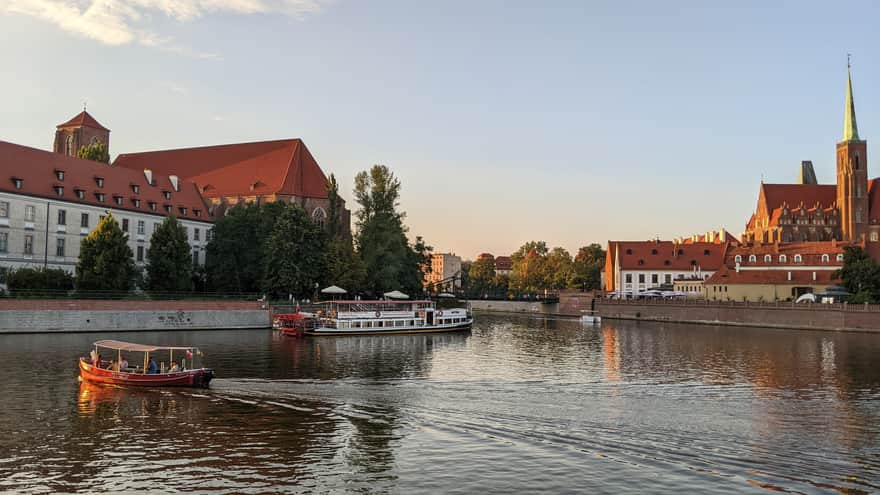
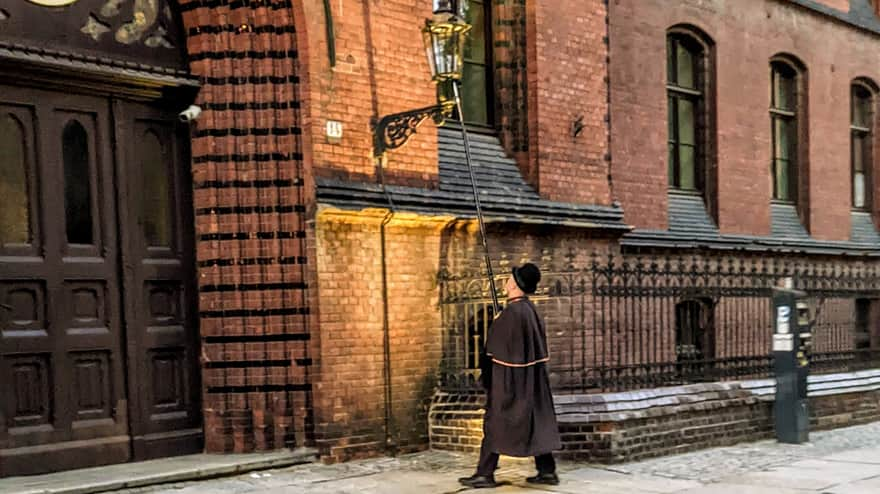
Visual Map with Marked Places
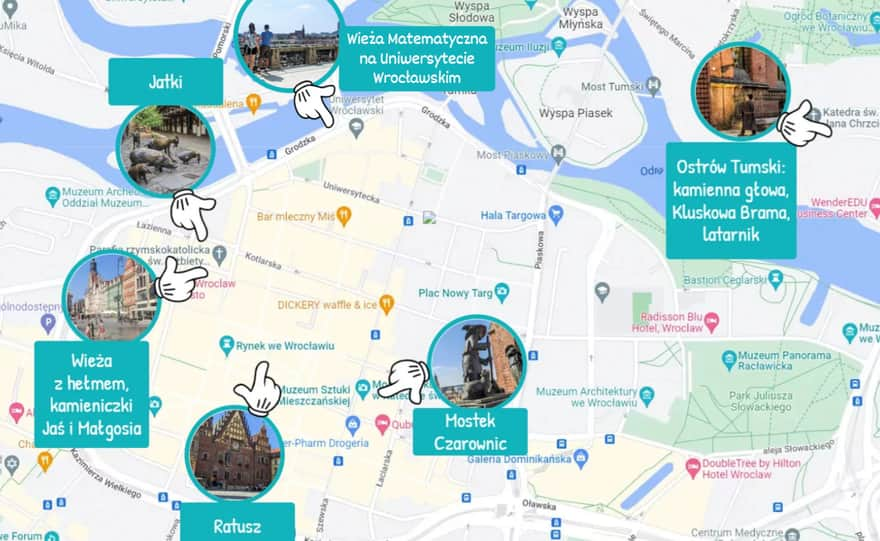
Coloring Pages of Wrocław for Children to Print
Explore Wrocław in color - print our coloring pages with dwarves, full of interesting facts and knowledge about Wrocław for children!
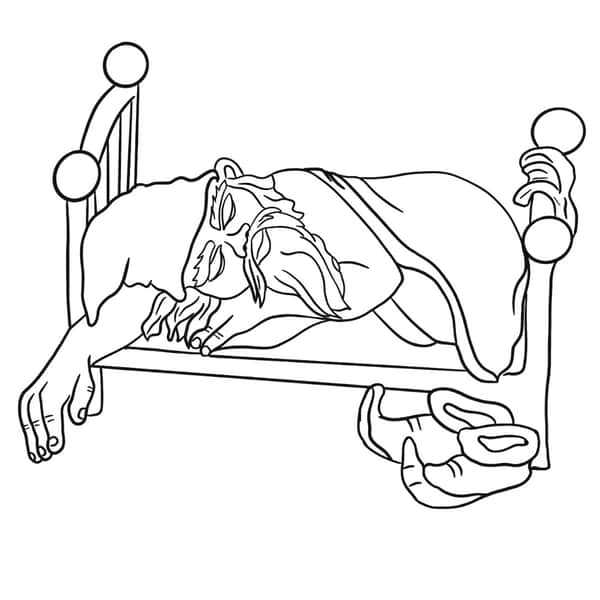
Wrocław Gnomes - coloring pages for children to print
Wrocław Gnomes - coloring pages for children and interesting facts ...
Publish Date:
More in the Region Wrocław (Wrocław)

